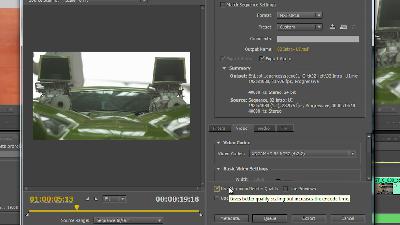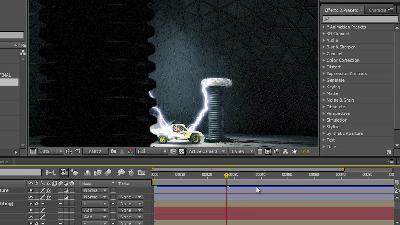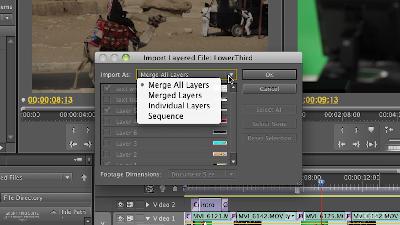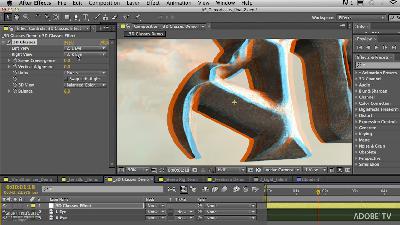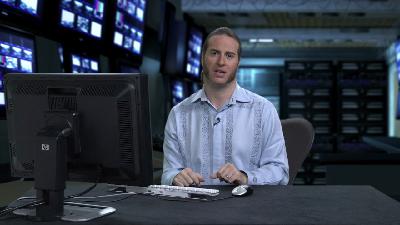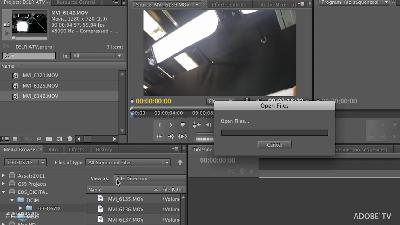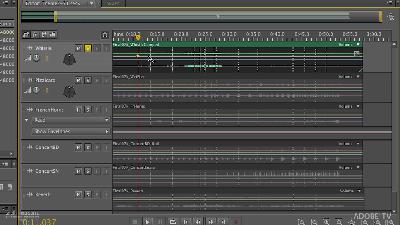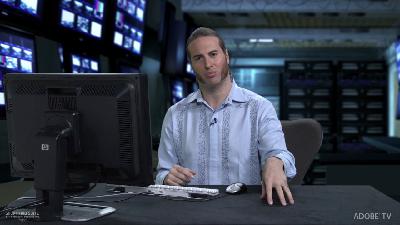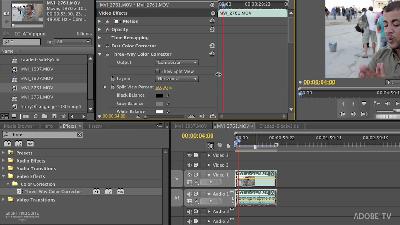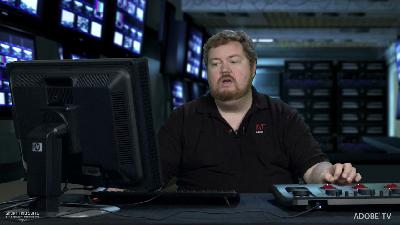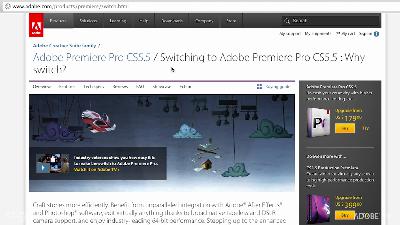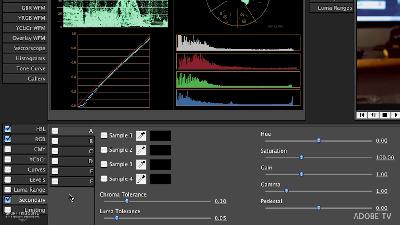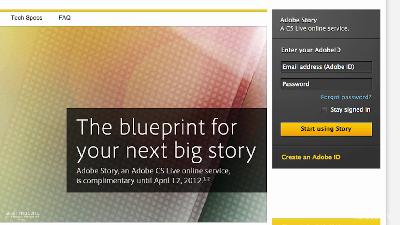Discover Short and Suite
Short and Suite

37 Episodes
Reverse
Learn how Adobe Premiere Pro and Adobe Media Encoder leverages background rendering to save you time.
For more helpful Adobe tutorials, visit Adobe TV, http://tv.adobe.com
Learn how to use the power of Dynamic Link to eliminate intermediate rendering between applications.
For more helpful Adobe tutorials, visit Adobe TV, http://tv.adobe.com
Learn how to get better performance and stability by taking advantage of sweeping optimizations and enhancements.
For more helpful Adobe tutorials, visit Adobe TV, http://tv.adobe.com
In this tutorial, Principal Worldwide Evangelist for Adobe, Jason Levine will reveal the native import options when working with Adobe Photoshop files (PSD) in Premiere Pro CS5.5. Bring in individual layers, merge your layers together, or create sequences, all the while maintaining transparency, layer styles, animation, even layer sets!
For more helpful Adobe tutorials, visit Adobe TV, http://tv.adobe.com
Karl Soule demonstrates a couple different ways to work with and create stereoscopic 3D content inside of Adobe After Effects CS5.5.
For more helpful Adobe tutorials, visit Adobe TV, http://tv.adobe.com
In this tutorial, Principal Worldwide Evangelist for Adobe, Jason Levine demonstrates how to detect, analyze and repair digitally clipped samples and distortions caused by AGC on your DSLR and other video cameras and audio-capture devices. Adobe Audition CS5.5's incredible tools for audio analysis and repair continue the application's legacy of fast, transparent, high-quality restoration.
For more helpful Adobe tutorials, visit Adobe TV, http://tv.adobe.com
In this tutorial, Principal Worldwide Evangelist for Adobe, Jason Levine will take you 'from the camera to the timeline', showcasing a complete Ingest-Edit-Export workflow when working with DSLR video media, or really any tapeless, file-based format in Premiere Pro CS5.5. Along the way, he'll describe many of the benefits of working natively with Photoshop and After Effects as well. And, if you're coming from Final Cut Pro or Avid Media Composer, this short tutorial will have you editing and exporting your DSLR footage very quickly.
For more helpful Adobe tutorials, visit Adobe TV, http://tv.adobe.com
In this tutorial, Principal Worldwide Evangelist for Adobe, Jason Levine demonstrates how to automate mixer functions using envelopes (incl. basic volume, pan, and individual effects parameters) while differentiating between clip-based and track-based automation. You'll also see Audition's capabilities for creating automated 5.1 mixes using the surround panner on each track.
For more helpful Adobe tutorials, visit Adobe TV, http://tv.adobe.com
In this tutorial, Principal Worldwide Evangelist for Adobe, Jason Levine will highlight using updated 'merge clip' options to synchronize externally-recorded audio with your DSLR video clips (and other video formats, without timecode).
For more helpful Adobe tutorials, visit Adobe TV, http://tv.adobe.com
In this tutorial, Principal Worldwide Evangelist for Adobe, Jason Levine walks you through some basic techniques for using Secondary Color Correction in Premiere Pro CS5.5, focusing on skin tones, as well as individual color selections for more intricate grading tasks…all played in real-time thanks to the amazing, 64-bit Mercury Playback Engine.
For more helpful Adobe tutorials, visit Adobe TV, http://tv.adobe.com
The Trim Monitor maybe an often-overlooked tool in Premiere Pro that can be used to precisely tweak an edit. Karl Soule shows you how to use this feature to fine-tune the in and out points of clips on a timeline at a cut with ease. For more Adobe tutorials, visit Adobe TV, http://tv.adobe.com
In this episode of Short and Suite, Karl Soule talks about how the new HP Workstations powered by Intel Xeon processors make great hardware solutions for running Adobe Production Premium. For more Adobe tutorials, visit Adobe TV, http://tv.adobe.com
In this episode of Short and Suite, Karl Soule shows how to import Closed Caption files such as .scc and .mcc and embed them into the timeline. You'll also learn how to preview closed captioning directly in Premiere Pro, as well as how to output your closed captioned video for broadcast. For more Adobe tutorials, visit Adobe TV, http://tv.adobe.com
In this episode of Short and Suite, Karl Soule shows how to use Cineform Neo3D for the Mac to edit stereoscopic 3D content natively in Adobe Premiere Pro. For more Adobe tutorials, visit Adobe TV, http://tv.adobe.com
In this episode of Short and Suite, Karl Soule walks you through a few of the great collaborative scriptwriting and preproduction features of Adobe Story. For more Adobe tutorials, visit Adobe TV, http://tv.adobe.com
In this episode of Short and Suite, Karl Soule shares tips on how to optimize and increase the quality of your encodings in Encore for DVD and Bluray delivery.
Join Karl Soule as he demonstrates how to use an external control surface to manipulate the controls of Color Finesse inside of Adobe After Effects.
Thinking about switching to Adobe Premiere Pro CS5.5? Join Karl Soule as he shares some of the tricks that can make that transition easier as well as a variety of assets which will help you make an informed decision.
Here are the links Karl referred to in the video: http://www.adobe.com/products/premiere/switch.html http://www.adobe.com/cfusion/tdrc/index.cfm?product=production_premium http://tv.adobe.com/show/switching-to-adobe-premiere-pro-cs5 http://www.adobe.com/products/premiere/switch.displayTab3.html http://twitter.com/#!/adobepremiere http://blog.vincentlaforet.com/2011/06/23/workflow-adobe-premiere-intro-and-fcp-7-roundtrip/ http://blogs.adobe.com/premiereprotraining/2010/09/premiere-pro-overview-documents-for-final-cut-pro-and-avid-media-composer-users.html http://blogs.adobe.com/toddkopriva/2011/05/you-do-not-need-new-versions-of-plug-in-for-after-effects-cs5-5.html http://tv.adobe.com/watch/industry-trends/adobes-vision-for-professional-video/
In this episode of Short and Suite, Technical Evangelist Karl Soule demonstrates how to use Color Finesse along with Adobe After Effects' built in masking tools to perform secondary color corrections.
Short and Suite’s Karl Soule briefly discusses the changes in Adobe Story and how it’s become a very powerful collaboration script writing tool.


